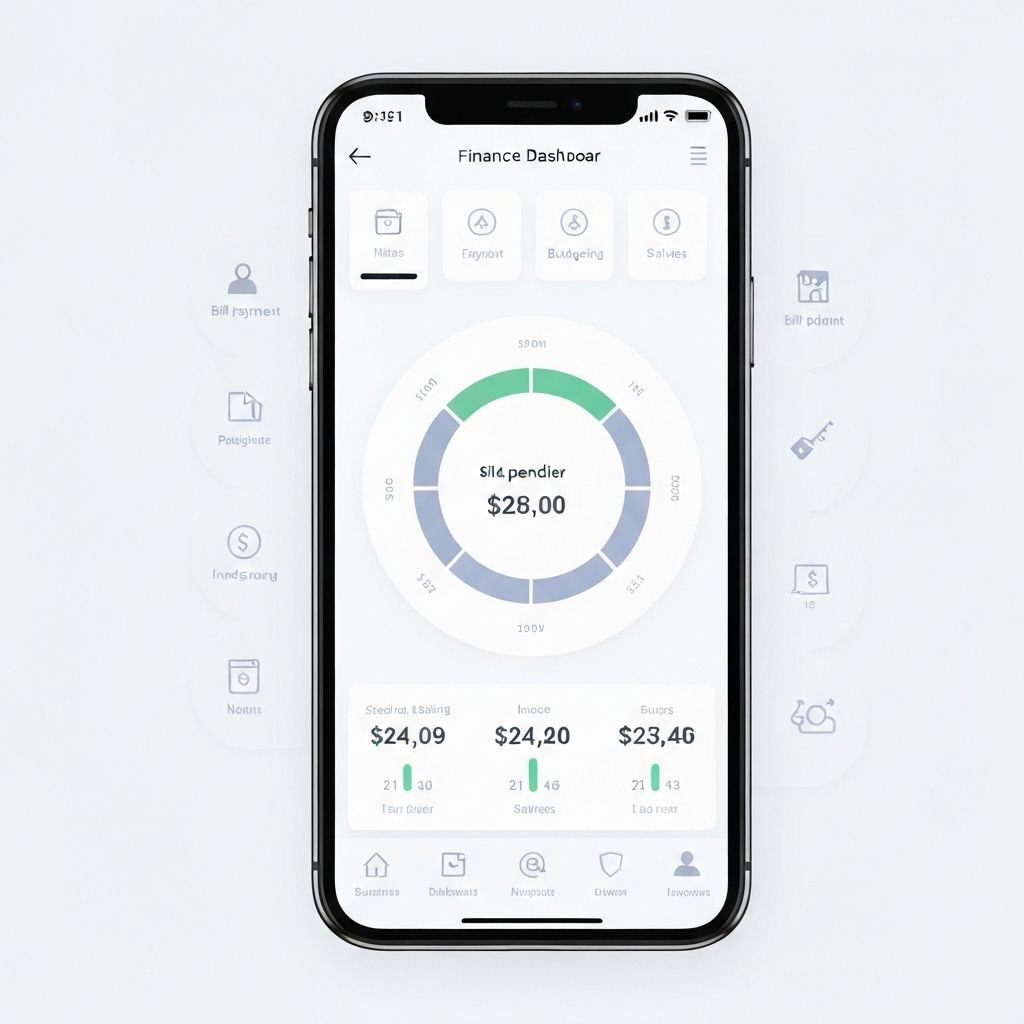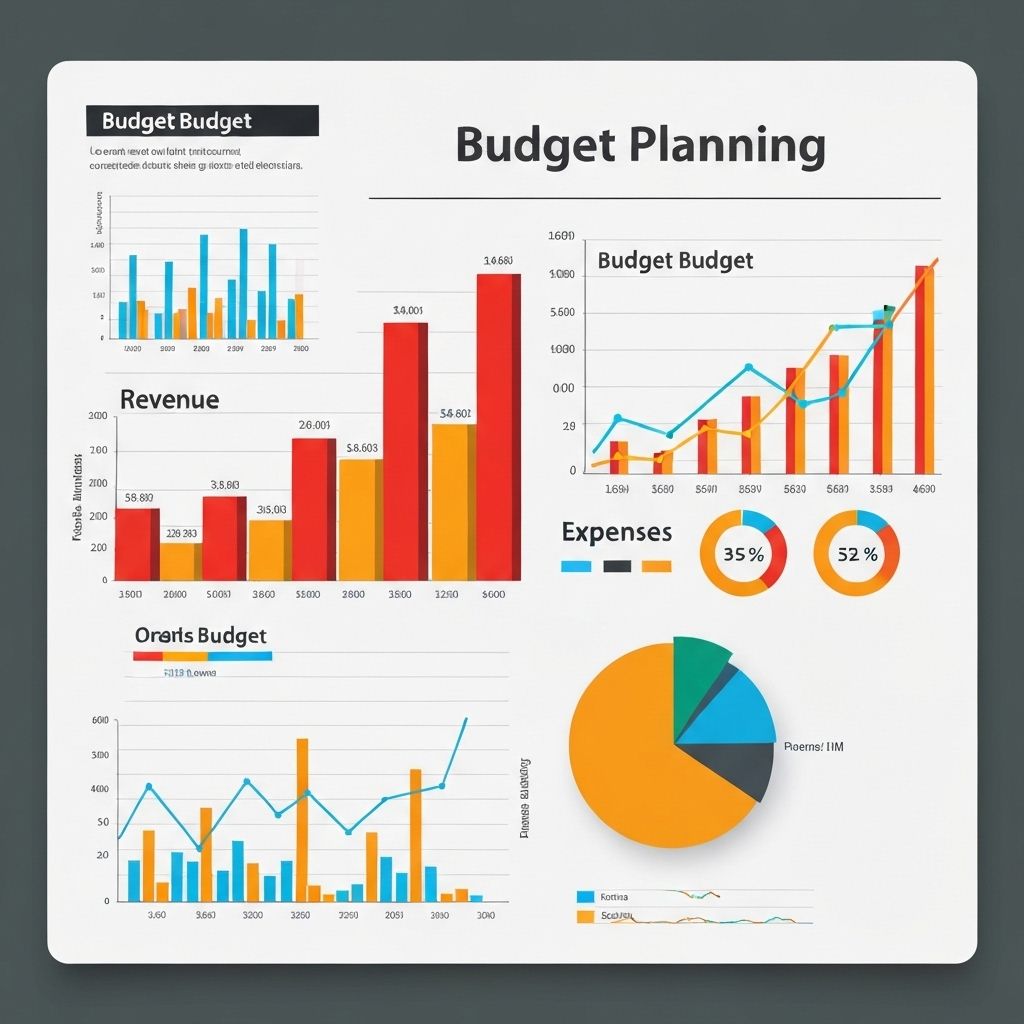The Financial Awareness Gap
Most people have no idea where their money goes each month. They earn a salary, pay bills, buy things, and wonder why there's nothing left at the end of the month. This lack of financial awareness is the biggest obstacle to building wealth.
Shocking Statistics
| Statistic | Percentage | Impact |
|---|---|---|
| People who track expenses | 23% | Only 1 in 4 people track spending |
| Underestimate spending by | 20-30% | Most people spend more than they think |
| Have emergency savings | 32% | 68% can't handle unexpected expenses |
| Living paycheck to paycheck | 56% | More than half struggle financially |
The Power of Tracking
Expense tracking is the foundation of financial success. When you track every rupee you spend, you gain powerful insights into your financial behavior and can make informed decisions about your money.
What Tracking Reveals
- Spending Patterns: Where your money actually goes
- Wasteful Expenses: Subscriptions you don't use, impulse purchases
- Saving Opportunities: Areas where you can cut back
- Financial Leaks: Small expenses that add up to big amounts
- Behavioral Triggers: What causes you to overspend
Benefits of Expense Tracking
1. Identify Spending Patterns
Tracking reveals where your money actually goes. You might think you spend ₹3,000 on food, but tracking shows it's actually ₹6,000. This awareness is the first step to change.
Common Spending Surprises
| Category | Estimated | Actual | Difference |
|---|---|---|---|
| Food & Dining | ₹5,000 | ₹8,500 | +70% |
| Entertainment | ₹2,000 | ₹4,200 | +110% |
| Shopping | ₹3,000 | ₹5,800 | +93% |
| Transportation | ₹2,500 | ₹3,200 | +28% |
2. Reduce Unnecessary Spending
When you see your spending in black and white, it's easier to identify and eliminate wasteful expenses.
The Latte Factor
Small daily expenses add up significantly:
| Daily Expense | Cost | Monthly | Yearly |
|---|---|---|---|
| Coffee shop visit | ₹120 | ₹3,600 | ₹43,800 |
| Lunch outside | ₹200 | ₹6,000 | ₹73,000 |
| Snacks/Chai | ₹50 | ₹1,500 | ₹18,250 |
| Ride-sharing | ₹150 | ₹4,500 | ₹54,750 |
| Total | ₹520 | ₹15,600 | ₹1,89,800 |
3. Achieve Financial Goals
Want to save for a house, car, or vacation? Expense tracking helps you find money to put toward your goals by cutting unnecessary spending.
Goal Achievement Timeline
By saving ₹10,000/month through expense tracking:
- 6 months: ₹60,000 - Emergency fund
- 1 year: ₹1,20,000 - International vacation
- 2 years: ₹2,40,000 - Car down payment
- 5 years: ₹6,00,000 - Home down payment
4. Avoid Debt
By tracking expenses, you can ensure you're living within your means and avoid accumulating credit card debt or taking unnecessary loans.
Debt Prevention Benefits
- Avoid 18-36% credit card interest
- Prevent personal loan dependency
- Maintain good credit score
- Reduce financial stress
- Build wealth instead of paying interest
5. Build Better Habits
The act of tracking itself makes you more mindful about spending. You'll think twice before making impulse purchases.
Behavioral Changes
| Before Tracking | After Tracking |
|---|---|
| Impulse purchases | Planned purchases |
| Eating out frequently | Cooking at home more |
| Unused subscriptions | Only essential subscriptions |
| No savings | Consistent savings |
| Financial stress | Financial confidence |
Common Excuses (And Why They're Wrong)
"I don't have time"
Reality: With modern apps like Dhan Well, adding an expense takes 10 seconds. That's less time than scrolling through social media.
- Quick add feature: 5-10 seconds per expense
- Weekly review: 10 minutes
- Monthly analysis: 15 minutes
- Total time investment: Less than 1 hour per month
"I already know where my money goes"
Reality: Studies show that people underestimate their spending by 20-30%. You don't know until you track.
"I don't spend much anyway"
Reality: Small expenses add up. That ₹50 snack three times a day is ₹4,500 per month or ₹54,750 per year.
"It's too complicated"
Reality: Modern expense tracking apps are designed to be simple and intuitive. No spreadsheets or complex calculations required.
How to Start Tracking Expenses
Step 1: Choose Your Tool
Use an app like Dhan Well that makes tracking effortless with features like:
- Quick add functionality
- Automatic categorization
- Visual reports
- Budget tracking
- Mobile-first design
Step 2: Track Everything
Every single expense, no matter how small. This includes:
- Cash purchases
- Card payments
- UPI transactions
- Online shopping
- Subscriptions
- Bills and utilities
Step 3: Categorize Spending
Group expenses into categories for better insights:
| Category | Examples |
|---|---|
| Food & Dining | Groceries, restaurants, food delivery |
| Transportation | Fuel, public transport, ride-sharing |
| Entertainment | Movies, subscriptions, hobbies |
| Shopping | Clothing, electronics, household items |
| Bills & Utilities | Rent, electricity, internet, phone |
Step 4: Review Weekly
Spend 10 minutes each Sunday reviewing your spending:
- Check total spending for the week
- Identify any unusual expenses
- Compare to budget
- Adjust behavior for next week
Step 5: Adjust Behavior
Use insights to make better financial decisions:
- Cut back on overspending categories
- Find cheaper alternatives
- Eliminate wasteful expenses
- Increase savings
Real-Life Success Stories
People who track their expenses consistently report:
Success Metrics
| Benefit | Average Improvement |
|---|---|
| Monthly savings increase | 15-20% |
| Debt payoff speed | 30% faster |
| Financial goal achievement | 40% sooner |
| Financial stress reduction | 50% less stress |
| Spending awareness | 80% more aware |
The 30-Day Challenge
Try tracking every expense for 30 days. At the end of the month, review your spending and identify three areas where you can cut back.
Challenge Guidelines
- Week 1: Track everything, no judgment
- Week 2: Start categorizing and reviewing daily
- Week 3: Identify patterns and problem areas
- Week 4: Make adjustments and see improvements
Expected Results
Most people find they can save ₹5,000-10,000 per month just by being aware of their spending. That's ₹60,000-1,20,000 per year!
Advanced Tracking Techniques
1. The Envelope Method (Digital)
Allocate specific amounts to different categories and track against those limits.
2. Zero-Based Budgeting
Give every rupee a job - track where every single rupee goes.
3. Percentage-Based Tracking
Track spending as a percentage of income for better insights.
4. Trend Analysis
Compare month-over-month and year-over-year spending trends.
Start Your Journey Today
Financial freedom starts with awareness. Sign up for Dhan Well and start tracking your expenses today. Your future self will thank you.
Quick Start Checklist
- ✓ Download Dhan Well app
- ✓ Create your account
- ✓ Add your first expense
- ✓ Set up categories
- ✓ Create your first budget
- ✓ Enable notifications
- ✓ Start your 30-day challenge


